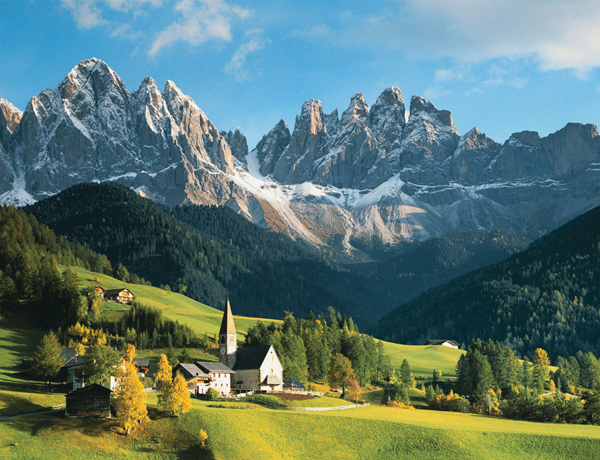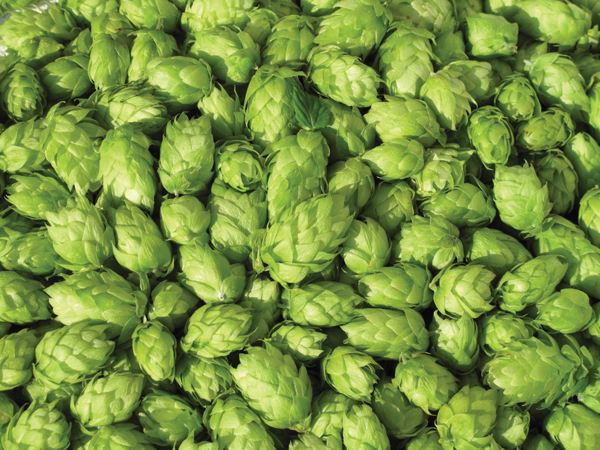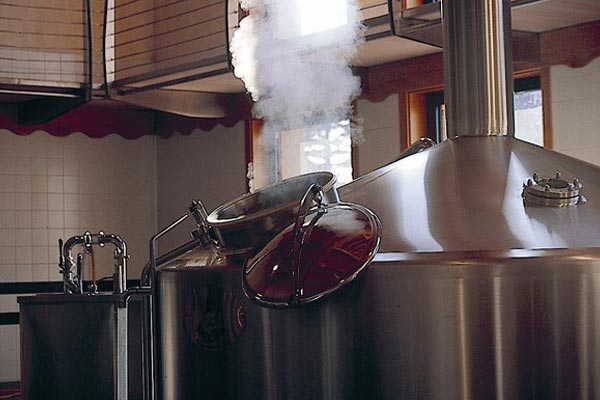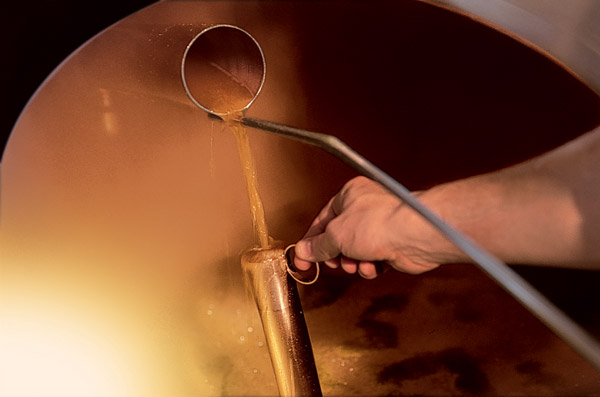The different types of beers result from the numerous interactions that occur among the ingredients. Each beer is created through the hard work of our master brewers, who begin by carefully selecting the finest ingredients.
The choice of water, for example, is of fundamental importance. The Theresianer plant, which stands at the foot of the Alps, uses the purest dolomite spring water. The barley is also carefully selected – Theresianer uses only two-row summer barley of the highest quality. It is steeped in water and germinated. After approximately a week, it is ready to be dried in special kilns, thereby being transformed into different types of malt. This is the ingredient responsible for a beer’s body. The production process begins in the Mill Room, where the malt is ground. In the Brewing Room, the malt is blended with the purest water in a mash tun.



The fundamental ingredients of the beer during the boiling step are water, barley, malt and hops.
The resulting mixture is heated in the tun at a medium-high temperature for approximately 3 hours, where it is stirred continuously with an electric mixer. During this phase, known as “mashing”, the starch in the grains of malt is transformed into simple sugars to create wort. The malt solids are separated from the wort in a lauter tun. This has a pierced false bottom that filters the mixture, making it ready for boiling with hops in the brew kettle.
During the boiling step hops, another crucial ingredient, are added. The type and amount of hops are carefully selected based on the type of beer being produced. It is the hops that lend beer its characteristic, slightly bitter flavour (they are also responsible for the unique aroma of Theresianer Premium Pils). Hops are added to the kettle containing the wort when the temperature reaches 100 °C.
After boiling for at least an hour, the temperature of the wort is lowered by passing it through cooling equipment.
At this point, it is ready to undergo the delicate primary fermentation process, which is initiated by adding yeast – the ingredient responsible for changing sugars into alcohol and carbon dioxide. The beer, which now contains all of its ingredients, is fermented for approximately one week at atmospheric pressure and a constant temperature of between 10 and 20 °C. Next the beer is aged at a temperature of 0 °C for 50 to 90 days. Theresianer beer production features a long aging process, which is essential to naturally achieving a perfect balance of taste and aroma. Finally, the beer is filtered and transferred into storage tanks, where it awaits transfer to kegs and bottles. To preserve Theresianer beer’s natural effervescence, carbon dioxide counter-pressure is used during filling, including for unfiltered beers and beer bottled in 0.75 L bottles.

Kettles during the filtration step.

Chemical and organoleptic quality controls are performed by in-house laboratories and master tasters.
Theresianer, like the noblest of beers, guarantees excellence in its production by following these rules:
7 days
To convert the barley into malt (steeping, germinating and hot-air roasting).
7 hours
To mash the grain, which entails: grinding the malt, mixing it with water and converting the starch into sugar (maltose) to obtain the wort that will be boiled with hops.
7 days
To complete tumultuous fermentation (also known as primary fermentation) at atmospheric pressure and a temperature of between 10 and 20 °C (depending on the type of beer). This process transforms the wort into “young beer”.
7 weeks
To age the beer under pressure at a temperature of about 0 °C, a critical step that determines the quality of the finished beer.